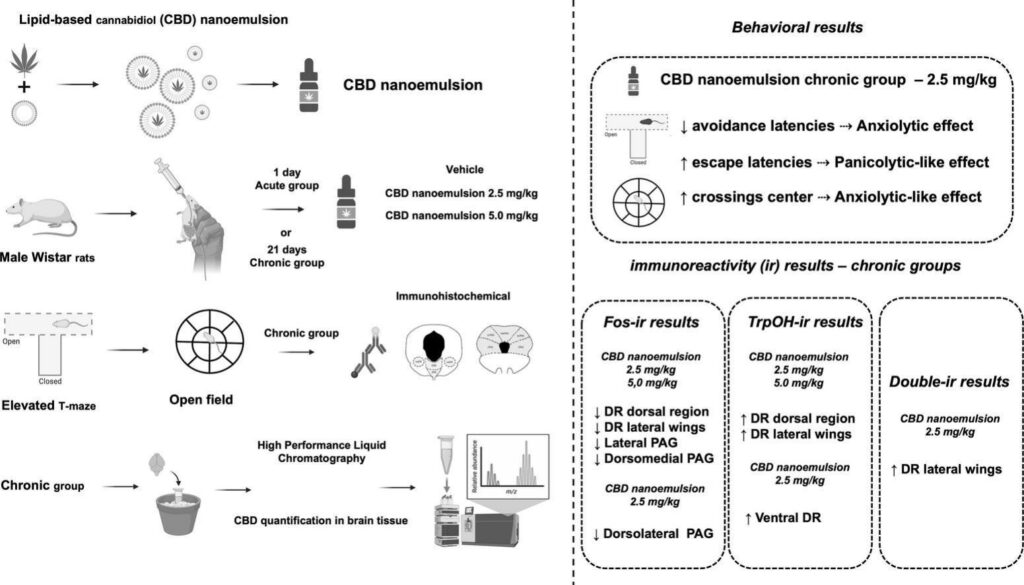A new study published in the journal Brain Research provides evidence that chronic use of a lipid-based cannabidiol (CBD) nanoemulsion may help reduce anxiety and panic-like behavior by targeting brain areas involved in emotional regulation.

Conducted by researchers from the Universidade Federal do Ceará and Universidade Federal de São Paulo in Brazil, the study evaluated both the behavioral and neurological effects of orally administered CBD nanoemulsions in an animal model (rats). The CBD was given either acutely or chronically over a 21-day period at doses of 2.5 or 5 milligrams per kilogram of body weight.
Researchers used the elevated T-maze test to assess anxiety- and panic-like behavior, along with open field testing. They also measured brain CBD concentrations and examined changes in neural activity and serotonin regulation by analyzing markers such as FosB/deltaFosB and tryptophan hydroxylase.
The findings showed that acute CBD had no significant behavioral effect, but chronic administration at the lower 2.5 mg dose resulted in clear anxiolytic and panicolytic-like outcomes. Rats treated chronically with this dose had about 64 ng of CBD per gram of brain tissue on average. The 5 mg dose resulted in lower brain concentrations and did not produce the same behavioral changes, suggesting a non-linear dose response.

On the neurological side, chronic 2.5 mg CBD treatment significantly decreased activity in specific regions of the periaqueductal gray and dorsal raphe nucleus—two areas heavily involved in the brain’s response to fear and panic. The treatment also increased levels of tryptophan hydroxylase, an enzyme essential for serotonin production, particularly in serotonergic neurons of the dorsal raphe.
The increase in double immunostaining for serotonin-related markers in key brain regions further supports the idea that the observed effects are linked to modulation of the brain’s serotonin system.
“These results point to the anxiolytic- and panicolytic-like effects of a CBD lipid-based nanoemulsion and suggest that they may be related to the modulation of DR serotonin neurons”, concludes the study.







